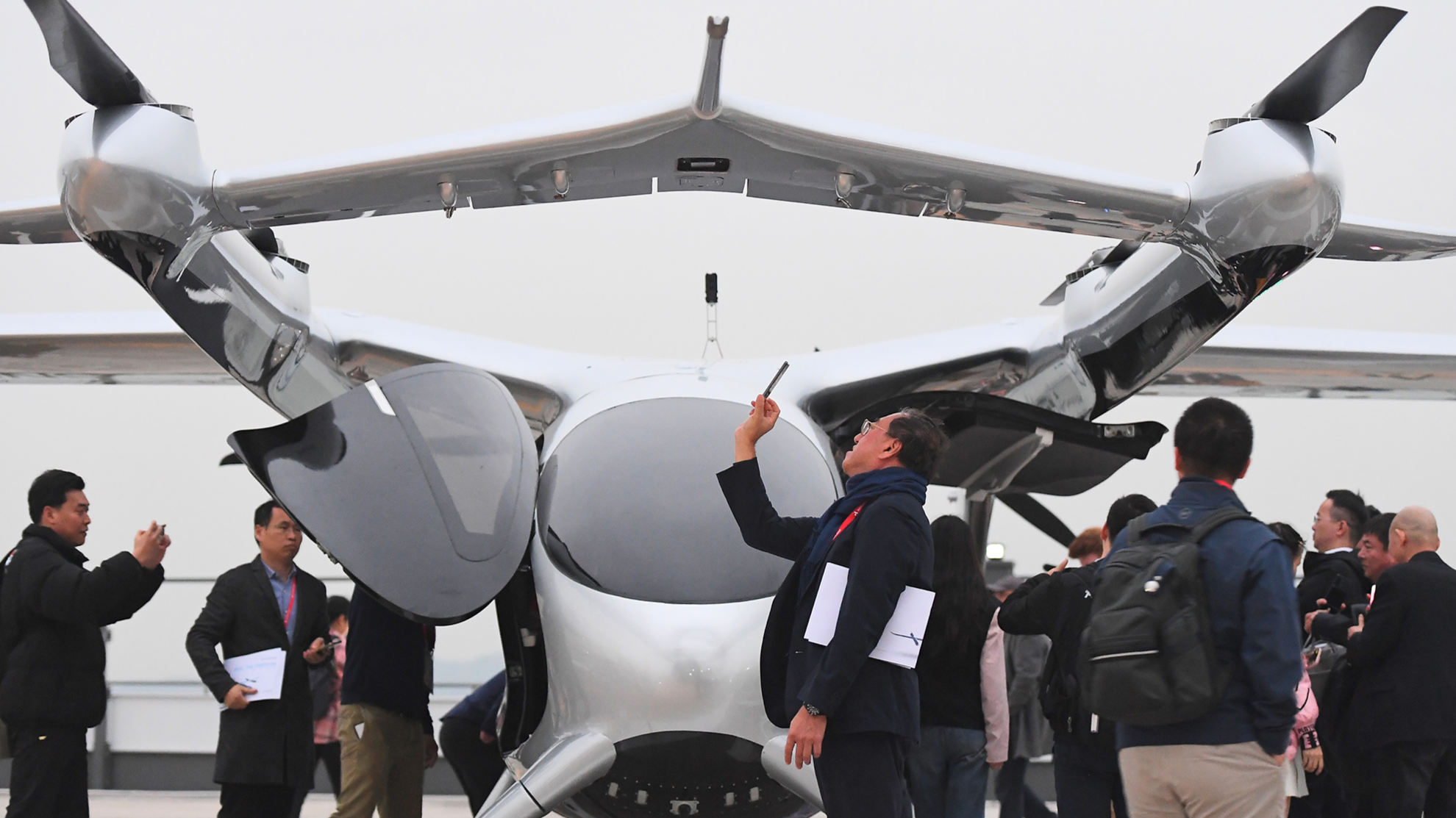
Three key flows stand out in the evolving narrative of economic development — the movement of people, the flow of goods, and the exchange of information — concluded by Lin Zuoming, chairman of Chinese Society of Aeronautics and Astronautics. These flows are the lifeblood of all economic activities.
While facilitating the movement of people and the flow of goods, transportation has progressed from the linear transport symbolized by the Grand Canal to the planar networks characterized by modern highways. Currently, the world is about to transition to a three-dimensional transport system, with a focus on the aerial domain. This shift is critical for advancing a new economic model — the low-altitude economy — which can revolutionize China's economy.
READ MORE: Post-plenum boost to tech SMEs seen
The low-altitude economy, driven by cutting-edge technology, efficient operations and high-quality development, has immense potential, as it can be a powerful driver of China's high-quality growth and industrialization. However, the development of the low-altitude economy hinges on effective and efficient airspace management. Without low-altitude flights, the low-altitude economy will only be a theoretical construct.
Traditional aviation, regulated by the stringent rules of the civil aviation and military departments, ensures the safety and reliability of high-altitude flights. But the low-altitude economy will introduce new operational scales and methods, rendering the old regulatory system inadequate and infructuous.
There is a growing agreement within the industry that innovation is necessary to sustain this sector's growth. Consequently, China and other countries with advanced aviation networks have recognized that low-altitude flight management should not be led by central or federal governments. Instead, the standards and regulations should be set by local governments, which should also shoulder more responsibilities in order to facilitate the low-altitude economy's development.
The low-altitude economy features a "heterogeneous, high-density, high-frequency and high-complexity" activity profile, marking a novel phenomenon in China's aviation history. Local governments, lacking specialized teams and transitioning from isolated to integrated flights, must navigate this new landscape now. The establishment of standards and rules by relevant national authorities, coupled with the delegation of authority to local governments at all levels, is an inevitable choice for the transformation of the management system in the future development of the low-altitude economy.
Despite the ongoing efforts to open low-altitude airspace and pilot low-altitude applications, significant challenges remain due to inadequate digitalization of communication, navigation, surveillance and airspace systems. The low-altitude economy's development relies heavily on airspace digitalization, with the classification and management of airspace grades being foundational. These extensive flight activities must operate within a digital environment, making the construction of a digital low-altitude network a prerequisite for future development.
The rapid growth of the drone industry in recent years, with applications in aerial photography, agriculture, emergency response and security, has made daily life much more convenient. Much of the low-altitude economy's flight activities will revolve around drone usage, for which digital low-altitude networks that primarily target drone management are required.
China leads the world in the development of drones, having introduced interim regulations for unmanned aircraft flight management in 2023, which came into effect in 2024. Although the Civil Aviation Administration and the Ministry of Industry and Information Technology have issued supporting policies, there is still a lack of detailed regulations for civilian drone traffic management and comprehensive top-level design documents, which can be attributed to regulatory frameworks lagging behind technological advancements and the cautious approach needed due to the booming interest in the low-altitude economy.
To establish a digital low-altitude economy network, it is essential to develop a scientific management perspective, clearly define the low-altitude economy's scope, and understand the objectives of operational modes of management. And that can be done only by collecting low-altitude data, assessing risks, charting low-altitude routes and identifying points of interest. There is also a need to devise security and risk maps, as well as communication data interaction maps to construct a comprehensive low-altitude aviation chart.
ALSO READ: Hong Kong can soar in ‘low altitude economy’
Only with these tools can drones be provided with route aviation, laying the foundation for intelligent low-altitude traffic management. Real-time operational assessments during drone flights represent the highest technical challenge, necessitating rigorous scientific measurement, planning and evaluation.
The low-altitude economy has huge growth potential, theoretically forming a new, expansive economic domain. The government has already signaled its commitment to develop the sector, for which the digital low-altitude economy network must be advanced, guiding the orderly progression of the low-altitude economy.
In this era of rapid technological advancements, embracing the skies as the next frontier of economic development is not just an option; it is a necessity. And with the right regulatory framework and technological advancements, a new dimension of economic prosperity can be unlocked.
The author is director of the General Affairs Department, Chinese Society of Aeronautics and Astronautics.
The views don’t necessarily reflect those of China Daily.


